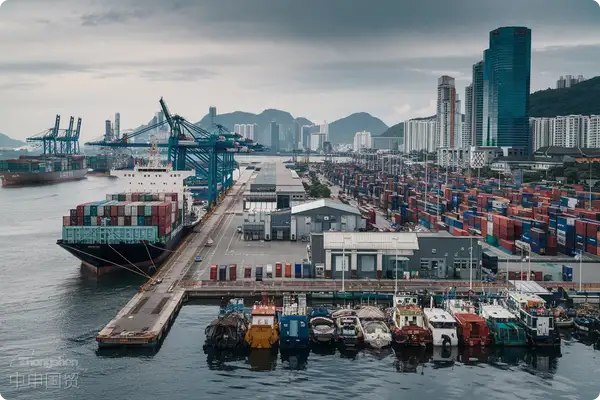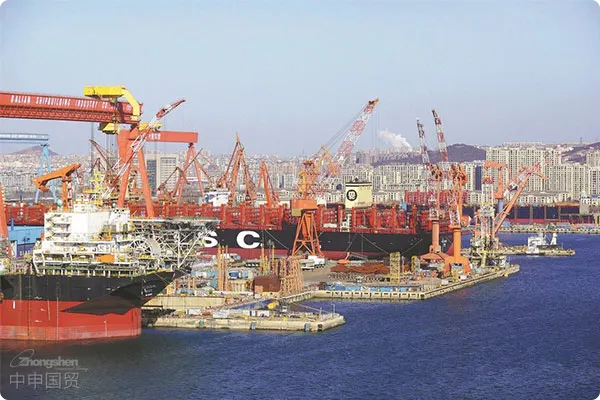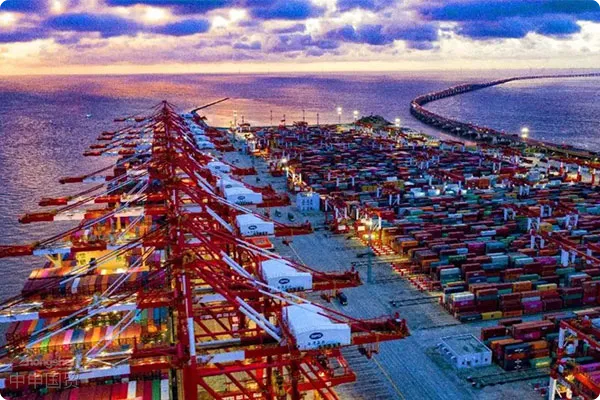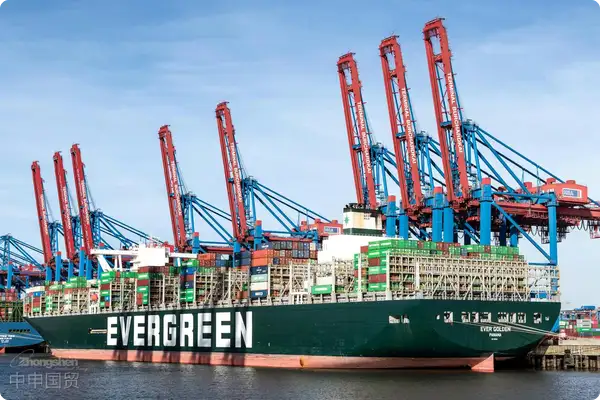- Shanghai Zhongshen International Trade Co., Ltd. - Two decades of trade agency expertise.
- Service Hotline: 139 1787 2118

I. Case Background: Special Considerations for Korean Mold Imports
In September 2022, we successfully handled the import of a batch of molds manufactured in Korea. As typical used mechanical and electrical products, these industrial molds are generally classified under HS codes 8462 or 8480, with an import process more complex than ordinary goods. Due to special regulatory requirements for used mechanical and electrical products, particular attention must be paid to key aspects such as pre-shipment inspection and accuracy of declaration elements throughout the customs clearance process.
Nansha Port was ultimately selected as the entry port for this batch of molds, primarily based on three considerations: first, as a core port in the Guangdong-Hong Kong-Macao Greater Bay Area, Nansha Port ranks among the highest in customs clearance efficiency in South China; second, its comprehensive inspection and quarantine facilities for mechanical and electrical products; and third, our long-term cooperation with a professional customs clearance team that has extensive local operational experience.
II. Core Challenges in Importing Used Mechanical and Electrical Products
In this case, the main challenges we encountered were concentrated in three areas:
1. Special requirements for pre-shipment inspection
According to the Administrative Measures for the Inspection and Supervision of Imported Used Mechanical and Electrical Products, used mechanical and electrical equipment valued over $100,000 must undergo pre-shipment inspection. We coordinated with a Korean inspection agency three weeks in advance to complete on-site inspection, ensuring the acquisition of the Pre-shipment Inspection Certificate for Imported Used Mechanical and Electrical Products that complies with Chinese standards. This pass is directly related to whether the goods can clear customs smoothly.
2. Precise grasp of declaration elements
Declaration elements for mold products include 12 key pieces of information: product name, purpose, working principle, brand, model, material, etc. We paid special attention to the fact that the HS code declaration for Korean molds must accurately reflect their processing precision (usually requiring indication of whether it reaches the 0.01mm level), which directly affects the tariff rate (ordinary molds are subject to about 8% tariff, while high-precision molds can enjoy a preferential rate of 5%).
3. Completeness of documentation
In addition to conventional bills of lading, invoices, and packing lists, importing used mechanical and electrical products also requires preparation of:
– It is recommended to verify through the following methods:Certificate (China-Korea FTA Certificate of Origin can enjoy tariff preferences)
- Equipment condition statement (including years of use and maintenance records)
- Safety compliance declaration
During the document review stage, our team discovered that the technical parameter table provided by the client lacked a Chinese translation, which was promptly supplemented to avoid subsequent delays.
III. Complete Record of Customs Clearance Operations at Nansha Port
The entire customs clearance process took approximately 3-4 weeks (including inspection time), with specific timelines as follows:
Phase 1: Preliminary preparation (7 working days)
- Confirm commodity code and regulatory conditions
- Arrange pre-shipment inspection (Korean agency issues certificate in 3 working days)
- Pre-review declaration documents (focus on verifying consistency between certificate of origin and invoice information)
Phase 2: Port clearance (2-3 working days)
- Submit customs declaration immediately upon vessel arrival (using advance declaration mode)
- Pay duties after system document review (tariff + VAT, totaling about 13%)
- Arrange container lifting, weighing and other operations at the terminal
Phase 3: Inspection and quarantine (15-18 working days)
This is the most time-consuming part. Nansha Customs conducts 100% container inspections for used mechanical and electrical products, mainly checking:
1. Whether the physical goods match the declaration
2. Whether safety warning labels are complete
3. Whether the hygiene condition meets requirements
We prepared detailed equipment photos and test reports in advance, reducing inspection time to the minimum.
IV. Five Value-added Services of Professional Agency
Through this case, we summarized professionalImport Representationcore value:
Risk anticipation capability
early identification of potential3Ccertification issues for used mechanical and electrical products (this batch of molds was exempt from certification due to power not meeting standards), saving customers approximately 2 weeks of certification time.
2. Tariff Optimization Solution
Utilizing the China-Korea FTA Certificate of Origin, we secured a 2% tariff reduction for the client. Simultaneously, by accurately declaring processing precision, we avoided potential back-tax risks caused by classification errors.
Emergency response mechanism
When insufficient rust prevention treatment was found during inspection, we immediately coordinated with professional companies for on-site treatment, avoiding return shipment risks.
4. Logistics Coordination Capability
Special low-bed trailers were arranged according to mold weight (single piece up to 8 tons), and oversize transport permits were obtained in advance.
5. Full-process Visual Tracking
Through our self-developed customs declaration system, clients can track real-time customs clearance status, including key milestones: inspection progress, tax payment, release notices, etc.
V. Practical Suggestions for Importing Enterprises
Based on 15 years ofequipment. For example, Indonesia has the SNI certification, Thailand has the TISI certification, and the Philippines has the BPS certification. It is necessary to confirm in advance the equipment voltage (such as 380V/50Hz in Thailand), the compatibility of the CE certification, and the proof of environmentally friendly materials.experience, we recommend enterprises pay attention to the following points:
1. Plan the schedule in advance
Allow at least 6-8 weeks for used mechanical and electrical product imports, especially requiring full communication with foreign sellers for pre-shipment inspection.
2. Pay attention to document details
Common issues include:
- Inconsistency between consignee information on Certificate of Origin and Bill of Lading
- Invoice not reflecting mold processing precision
- Packing list not indicating used condition
We recommend using professional document review checklists for item-by-item verification.
3. Choose appropriate entry ports
For precision molds, we recommend prioritizing ports with professional inspection equipment (such as Nansha, Shanghai Yangshan, etc.), which can significantly reduce inspection time.
4. Establish long-term agency cooperation
Signing annual service agreements with professional agencies not only provides more favorable service rates but also offers value-added services like priority processing and dedicated customer service.
This case demonstrates that professional import agents are not merely simple order runners, but rather solution providers that integrate customs, logistics, taxation, and other resources. Especially in the current complex and ever-changing international trade environment, choosing experienced partners can often accomplish import tasks with half the effort.
Related Recommendations
? 2025. All Rights Reserved. Shanghai ICP No. 2023007705-2  PSB Record: Shanghai No.31011502009912
PSB Record: Shanghai No.31011502009912










